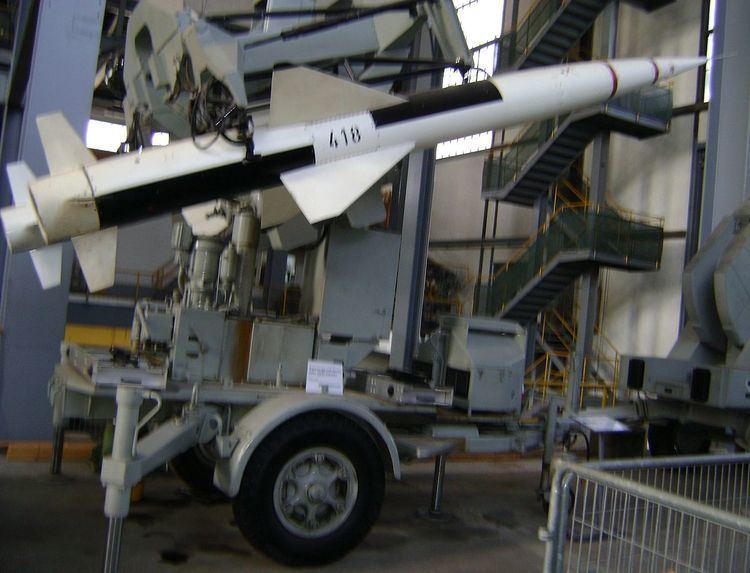Type Surface-to-air missile In service 1960–? Designed 1958 | Manufacturer Oerlikon Contraves | |
 | ||
The RSD 58 is an early production surface-to-air missile system developed by Rheinmetall Air Defence in Switzerland from 1947. Test firings were first made in 1950 with production starting in 1952 for the armed forces of Japan. Test firings were also made in Switzerland and Italy. On the basis of the RSA Missile, the beacon controlled missile system RSC / D was developed. There was no significant order, except for the delivery of a training battery to Japan and thus no larger order. The system consists of double start carriage, beacon, search radar, command station and diesel generator. All five components are each constructed on a single-axle trailer apart from the diesel generator that was built on a two-axle trailer. The two hydraulic elevator bars throw on / trolley enabled a self-assemble with rocket was thus no additional crane / loading vehicle necessary. The system RSC / D in 1960 was the basis of the developed under the code names Kriens RSC Missile system, which was completed in 1966 by EMD. The Air Force used instead the British Bloodhound system. A double carriage start of the RSC / D with 2 missiles and a beacon is now at the Full Military Museum. Start a double mount with 2 missile system RSD Kriens is now at the Aviation Museum in Dübendorf.
Contents
The missile system RSC / D of the company Oerlikon Contraves was built in 1958 and tested in Italy.
Design and development
Design work on the RSD-58 commenced in 1947, resulting in a liquid-fuelled rocket-powered missile, guided to its target by riding a radar beam. The complete system included a battery command post, target tracking radar, guidance beam transmitter and six twin railed trainable launchers. The entire system, including the static launchers, was readily transportable to new locations with mobility claimed to be similar to that of a heavy anti-aircraft gun system.
Test firings commenced in Switzerland during 1950-51, with a batch of 25 pre-production missiles being evaluated at Holloman Air Force Base in New Mexico, United States in 1953.
Targeting is by search radar and beam transmitter with targets tracked by a search radar until a beam riding transmitter locks on, at which point the missile can be fired, riding the beam until impact, proximity fuze or radio signal detonation. Launchers, slaved to the beam transmitter can launch missiles at any angle form 10° to 90°. Control of the missiles is by vectoring rocket motor combustion chamber at low speeds and controllable rear fins at higher speeds.
A parachute recoverable training round, the RSC-57, was developed which was powered by a reduced burn time rocket motor with the recovery parachute replacing the warhead.
